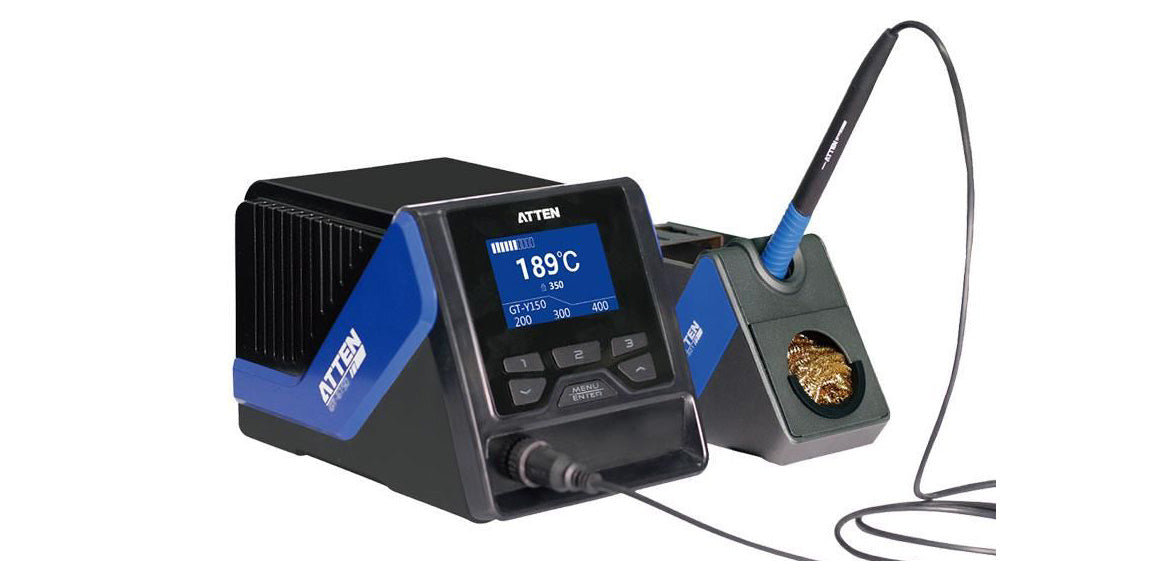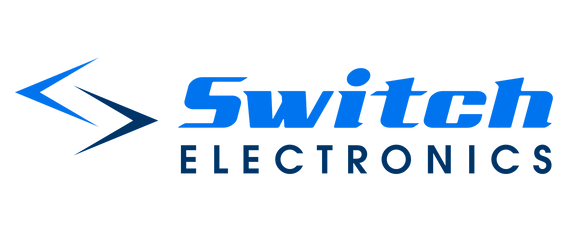
How to Choose the Correct Soldering Iron
Soldering irons are essential for nearly every task in electronics. They are used to make PCB repairs, join multiple wires, install new components, remove components, the list is endless! There are soldering irons for a wide range of applications and budgets, so it is critical to choose the correct type.
Types of Soldering Irons
There are 2 main types, the traditional soldering iron or soldering station. The traditional soldering iron is typically a fixed temperature and lacks most features found with a soldering station. It is a cost effective option and is portable, suitable for basic tasks.
The soldering station is often temperature adjustable and incorporates a stand to hold the iron. Soldering stations often have features including temperature presets, automatic standby and temperature calibration. They are often the preferred choice for engineers and users who solder more frequently.
Parts of the Soldering Iron
The soldering has 4 main parts; tip, barrel, heating element and handle.

The handle is your main interaction with the soldering iron, so it is important to choose a type that is comfortable to hold. Cheaper soldering irons often feature a plastic handle which can become uncomfortable when using for longer periods of time, better quality irons often feature an ergonomic moulded grip.
The heating element is what the names suggests, it is the part of the soldering iron that generates the heat. Often made out of ceramic, the heating element conducts electricity and transfers it to the soldering iron tip. Heating elements will eventually burn out, so it is often best to have a spare in case this happens.
The barrel of the soldering iron holds the heating element and tip in place, so it can conduct electricity. The barrel will often need to be removed to access the heating element.
The tip of the soldering iron is the main point of contact with the component you are soldering, so it is a crucial part of the soldering iron. The tips come in a variety of different shapes and sizes best suited for specific applications. The tip is usually held together with a screw, so they are easily interchangeable. The tip is a consumable item, so it is a good idea to have a spare for when it needs to be replaced.
Soldering Iron Tips

The soldering tip is often an overlooked part of the soldering iron. Different tips are suited for certain applications, the main types of tips are conical, knife, chisel, hoof.
Conical tips are one of the most common, they are pointed and often used for precision work. The point allows the tip to reach small areas which other tips may be prohibited. Conical tips are often used when working with surface mount components and wire connectors.
Knife tips feature an edge that allow it to reach into slots that other tips cannot. They are useful with PLCC components and applications with multi-leads.
Chisel tips are suited for a wide range of soldering applications. They feature a tapered edge that allows it to get in-between components. The chisel tips can be used with wires, connectors, surface mount components and on-board connectors. Chisel tips are also commonly used for desoldering applications when used in conjunction with an extracting tool.
Hoof tips are the least popular out of the 4, they feature a slight concave which makes the suited for drag and pre-loaded soldering. The design of the tip helps it spread solder more easily, making it useful for soldering and tinning cables.
Power Ratings
Soldering irons typically range from 10W to 100W. Choosing the correct wattage depends on the application you are planning to use the soldering iron for. When the soldering iron tip comes into contact with a component, the component will dissipate and absorb some of the temperature from the tip. Generally speaking, the larger the component the more heat it will dissipate from the tip, choosing the correct wattage will ensure the temperature of the tip does not drop. If the wattage is too low, the temperature of the tip will drop and it may not be high enough to melt the solder.
For general soldering applications and light duty work a 30W soldering iron will be more than adequate and is often the most common for low cost soldering irons. When soldering larger components like transformers and battery cables, atleast 50W is recommended. Choosing a higher wattage soldering iron will give you more applications it will be suitable for, however they are usually more expensive than lower wattage versions.
Which soldering iron to choose?
Under £25
60W Temperature Adjustable Soldering Iron 480°C
48W Temperature Adjustable Soldering Iron Station
Under £50
Atten ST-2065D Soldering Iron with LCD 65W
The ST-2065 soldering iron is a perfect choice for beginners and users who would like to upgrade to a higher quality option. The iron features an LCD display, temperature adjustable, automatic sleep and 65W wattage suitable for most applications. The iron is manufactured by ATTEN who are known to produce reliable soldering equipment without the higher prices often associated with other quality brands.
Atten AT937 Soldering Station 50W
The AT937 soldering station is ESD safe and features a 50W power rating. The station is temperature adjustable from 200-480°C and features an ergonomic handle. It is a reliable station that has been trialed and tested for many years. It provides excellent value for money and makes an ideal choice for beginners and more advanced users.
Under £100
Atten ST-60 Premium Digital Soldering Station 60W
The Atten ST-60 is one of our most popular stations and for good reason. It features an ergonomic design and easy to use functionality with the LCD display and preset buttons. The station also uses a dual wire ceramic heating element which provides very fast warm-up, and benefits from features including automatic standby. The station also features MCU controlled temperature calibration making it suitable for professional applications and hobbyists of all ability.
Atten AT938D Digital Soldering Station 60W
The AT-938D is the upgraded version of the popular AT-937 station featured above. It features a wide temperature range making it more suitable for delicate applications and also features an LCD display. The station benefits from 3 temperature preset buttons and is a popular options for hobbyists of all skills.
£100+
Professional 150W Intelligent Soldering Station Atten GT-6150
The GT-6150 is one of the most advanced stations on the market. Manufactured by Atten, it competes with other stations more than double the price. It features 150W power rating and an ergonomic design suited for long periods of use. The station can be used with various tools which are automatically detected by the stations computer. The station also measures numerous parameters which are displayed on the graphics display. The stations settings are fully customisable, making it suitable for professional applications requiring a high performance and reliable solution.








Leave a comment